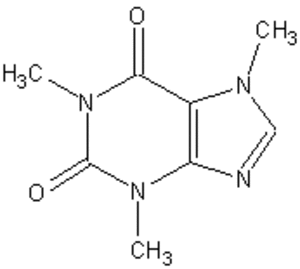In the novel Don Quixote and the play Tartuffe neither Don Quixote nor Orgon feared women. Don Quixote thought himself a romantic and loved women, specifically his lady, Aldonza Lorenzo, whom he called “Dulcinea del Toboso” (1531). Orgon was anything but a romantic. He paid no attention to his wife, Elmire, and treated his daughter, Mariane, like a servant, telling her what to do all the time. These contrasting views of the characters’ treatment of women show they do not fear women.
Don Quixote loved to read books about chivalry. “He became so immersed in his reading that he spent whole nights from sundown to sunup and his days from dawn to dusk in poring over his books until, finally, from so little sleeping and so much reading, his brain dried up and he went completely out of his mind” (1529). As a result of his readings he came to believe that the tales he read of knightly encounters and of love and its torments were true (1529).
Eventually, he became so mad that he began to believe that “in order to win a greater amount of honor for himself and serve his country at the same time” he would have to become a knight-errant and roam the world on horseback and wear a suit of armor (1529).
Don Quixote roamed the countryside looking to defend anyone and anything that was in trouble. His friends became concerned for him and one of them, the bachelor Sanson Carrasco, planned to dress as a knight and fight Don Quixote on the basis that if he won, Don Quixote would have to return home.
Don Quixote won the first battle, which forced Sanson to create another knight character for himself. He became the Knight of the White Moon and claimed that his lady was beyond comparison more beautiful than Dulcinea. Don Quixote would not agree with the knight’s statement and thus the two began to battle. (1618)
This time, Sanson won. But Don Quixote would not concede that the Knight of the White Moon’s lady was more beautiful than Dulcinea. The Knight of the White Moon allowed Dulcinea’s beauty live on undiminished. Instead, he retired Don Quixote to his village for as long as he specified. This allowed Don Quixote to remain loyal to his lady Dulcinea and also gained Sanson his goal of returning Don Quixote home so he would not be hurt. (1619)
Throughout the story, Don Quixote remained loyal to his lady Dulcinea and showed his love and affection for her. He also showed love and affection of a different sort towards his niece and housekeeper, whom he treated as and called his daughters (1625). This shows that he feels anything but fear towards women.
In Tartuffe, Orgon treated his women far differently than Don Quixote did his, but he too did not show fear towards them. He tended to either ignore them or rule them as he sees fit.
When we first meet Orgon in Act I. Scene 5, he has returned home from a voyage to the country. Upon his return, he asked Dorine, the maid, to give him the household news. She tried to tell him that his wife, Elmire, had been ill, but he kept putting her off and asked how Tartuffe, his friend and houseguest, was. This shows that Orgon is far more interested in news of his friend than that of his wife. (1913)
Orgon continued to show his loyalty only to Tartuffe up until the end of the play. He even went so far as to promise Tartuffe his daughter, Mariane’s, hand in marriage even though he already promised her to Valere, whom Mariane was in love with. He told Marianne that he wanted Tartuffe to become part of his family through marriage. (1918)
When Orgon told the rest of the family of his plan, he remained adamant about it even when Mariane threatened to join a convent. He just laughed at her comment and told her that all lovesick girls have the same thought. Elmire tried to make him see that he was being foolish, but he told her that he knew Tartuffe and he wouldn’t change his mind. (1940-41)
It is only towards the end of the play that Orgon finally saw the truth about Tartuffe when Elmire set up a trap to show Orgon Tartuffe’s true colors. She hid Orgon under a table and asked Tartuffe to come into the room. She told Tartuffe that she wanted to take him up on his offer of love. He responded positively. (1942-1944)
It is only when Orgon sees for himself that Tartuffe did in fact make a play for his wife that he responded. But he only appeared to be upset that a man he considered a friend was disloyal to him and betrayed him. He did not appear to be upset on behalf of his wife. He only defended his own name and honor, not Elmire’s. (1945-1946)
At the end of the play, Valere came to Orgon to warn him that Tartuffe had denounced him to the King and that there was a warrant out for his arrest. Because Valere showed loyalty to him, Orgon once again promised him Mariane’s hand in marriage. This shows that it was Valere who changed Orgon’s mind and not Mariane, his own daughter. (1953, 1956)
By showing loyalty only to Tartuffe and then Valere over Elmire and Mariane, Orgon showed that he does not fear women but that he disregards them.
Both Don Quixote and Orgon showed throughout their stories that they do not fear women. Don Quixote showed that he had a great love and respect for them. Orgon showed that he had no regard for them. But neither character displayed any sense of being afraid of them.
_________________________________________________________________________________________
Works Cited
Mack, Maynard, et al., eds. The Norton Anthology of World Masterpieces. exp. ed.
New York: Norton, 1997

